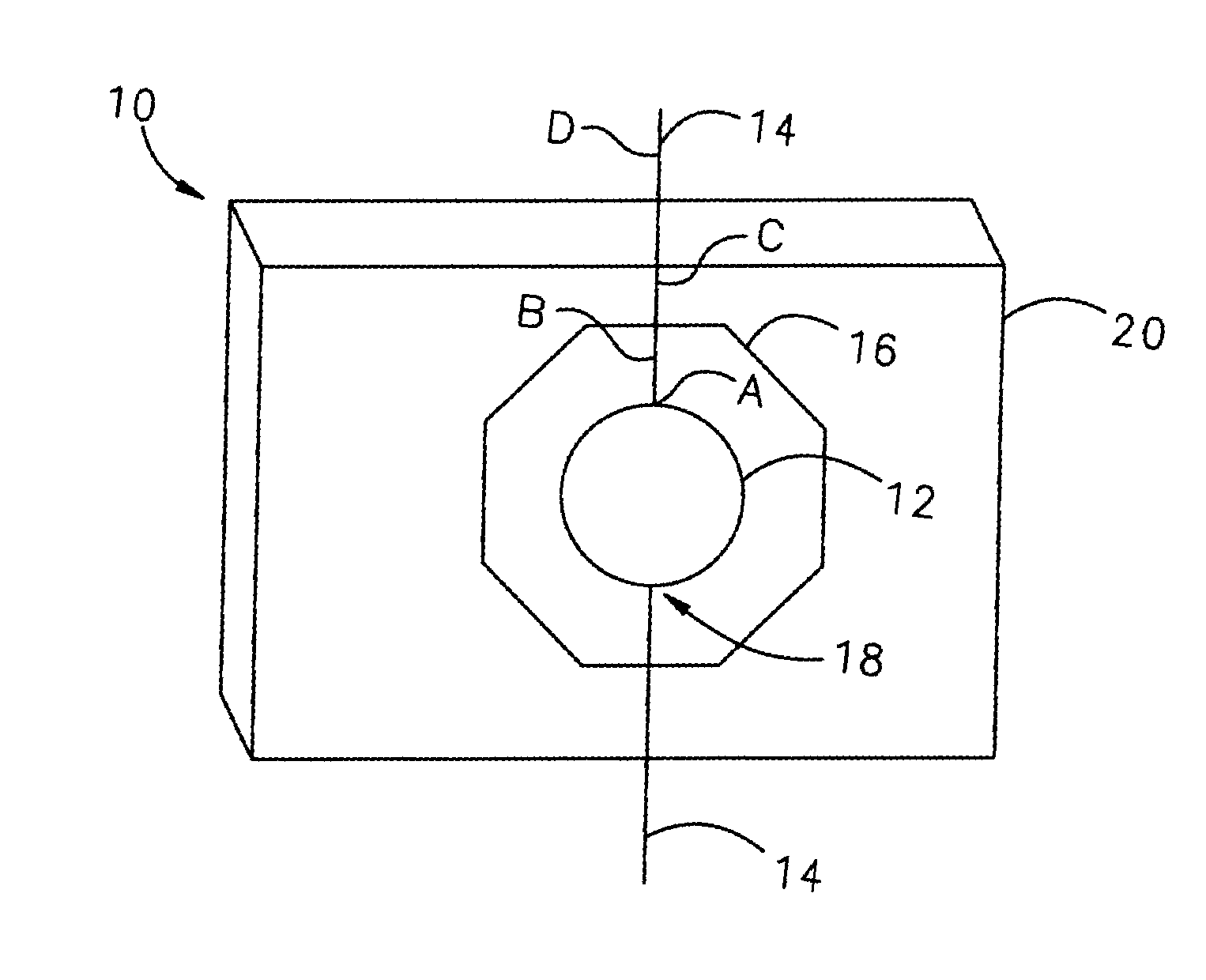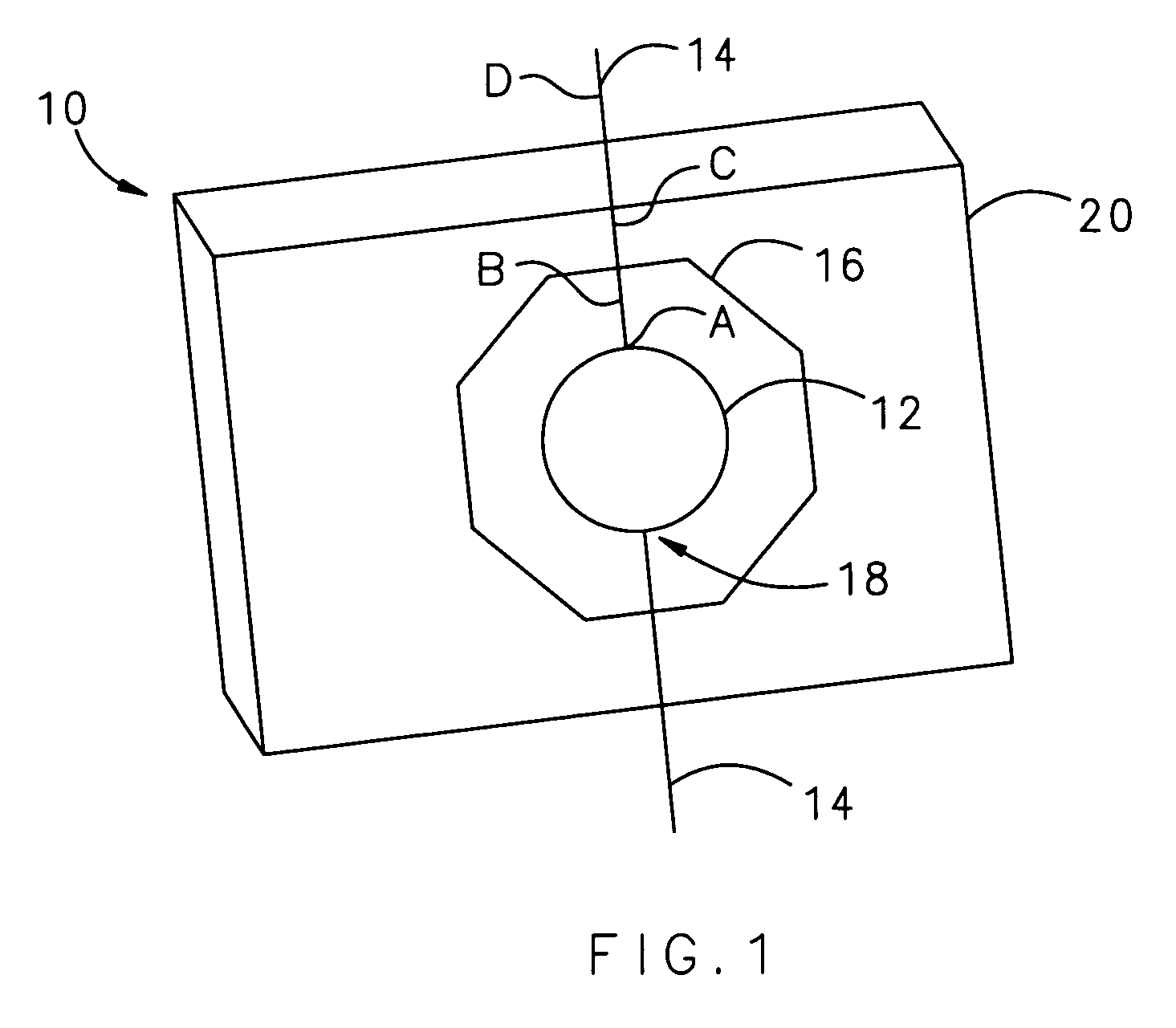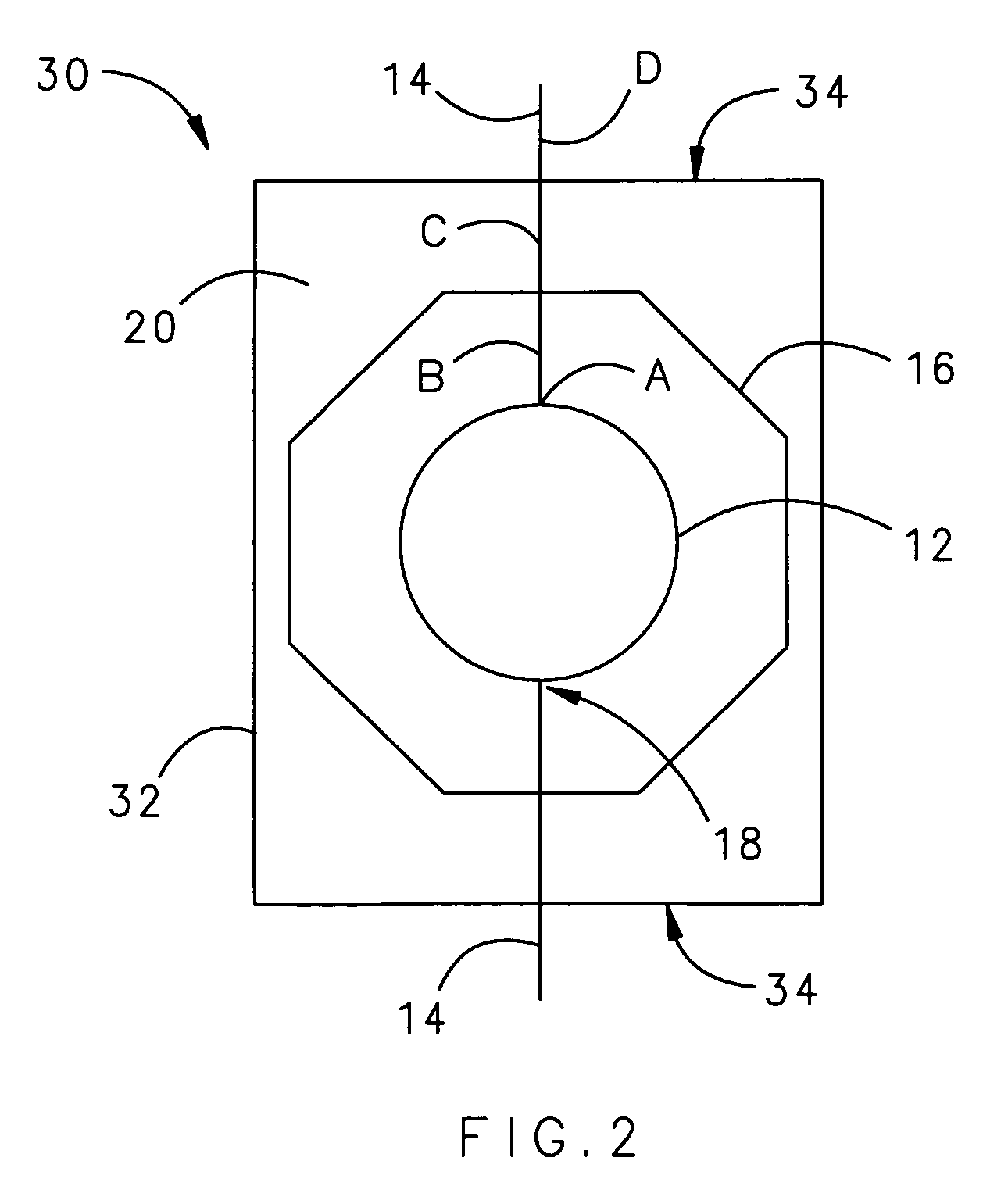Method of protecting a capacitor
a technology of capacitors and membranes, applied in the direction of variable capacitors, fixed capacitor details, fixed capacitors, etc., can solve the problems of inadequate moisture protection, deformation and failure of many capacitive elements, and add significantly to the cost, size and weight of these conventional capacitors, and achieve less expensive or unsealed, low gas, and light weight
- Summary
- Abstract
- Description
- Claims
- Application Information
AI Technical Summary
Benefits of technology
Problems solved by technology
Method used
Image
Examples
Embodiment Construction
[0014]FIG. 1 illustrates a schematic cross-sectional view of an electric device 10. The electric device 10 includes an electric element 12, preferably a wound film capacitor, with electric leads 14 for power input and output. The electric leads each include a first portion A coupled to the electric element 12, a second portion B, third portion C, and fourth portion D that extends from the electric element 12. A coating layer 16 is deposited adjacent to the electric element 12.
[0015]The coating layer 16 is a polymer, preferably poly-para-xylylene. Poly-para-xylylene is also known generically as “Parylene” which is a polymer series developed by Union Carbide. The term “Parylene” describes vapor deposited poly-para-xylylene polymers without referring to any particular chemical formulas or manufacturers for any particular polymers of this chemical family. Parylene generally exhibits fine moisture resistance and low gas and moisture permeability and thus provides a protective barrier for...
PUM
| Property | Measurement | Unit |
|---|---|---|
| thick | aaaaa | aaaaa |
| thick | aaaaa | aaaaa |
| thickness | aaaaa | aaaaa |
Abstract
Description
Claims
Application Information
 Login to View More
Login to View More - R&D
- Intellectual Property
- Life Sciences
- Materials
- Tech Scout
- Unparalleled Data Quality
- Higher Quality Content
- 60% Fewer Hallucinations
Browse by: Latest US Patents, China's latest patents, Technical Efficacy Thesaurus, Application Domain, Technology Topic, Popular Technical Reports.
© 2025 PatSnap. All rights reserved.Legal|Privacy policy|Modern Slavery Act Transparency Statement|Sitemap|About US| Contact US: help@patsnap.com



